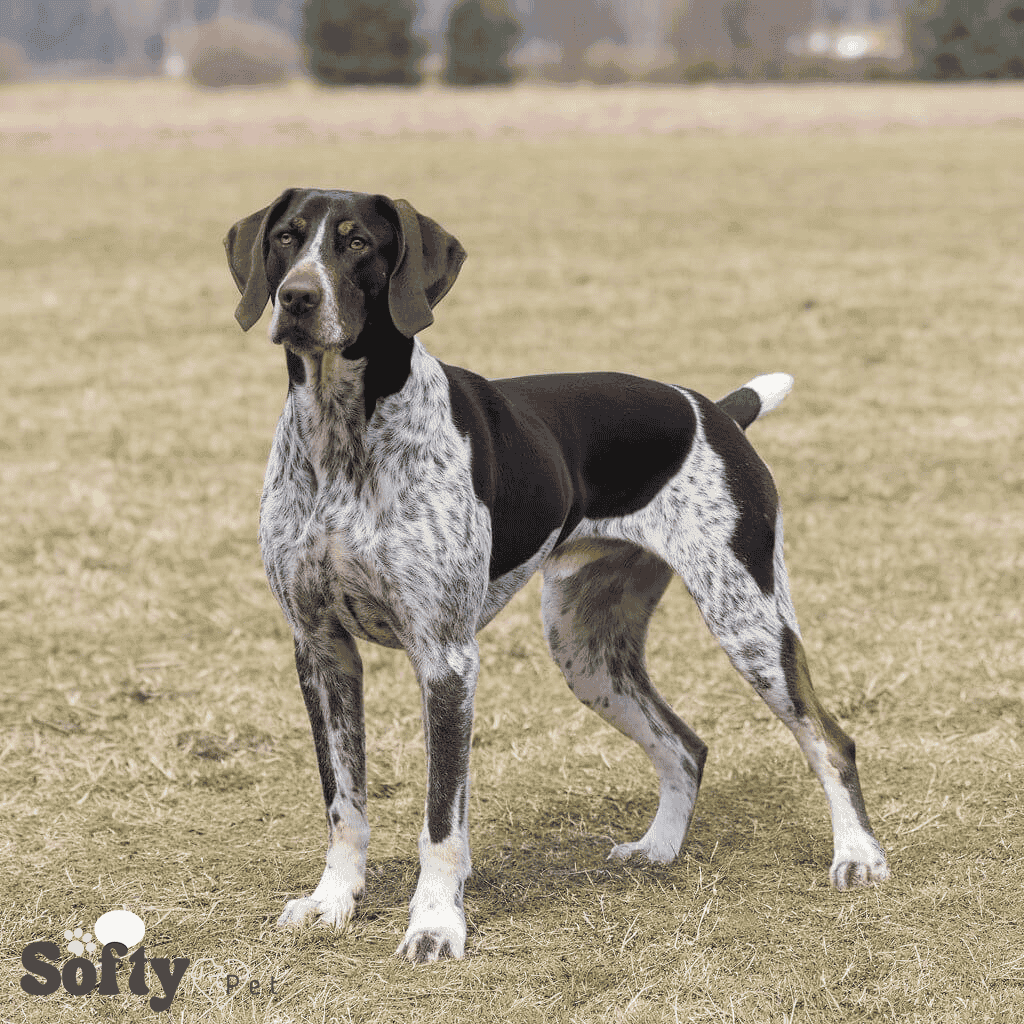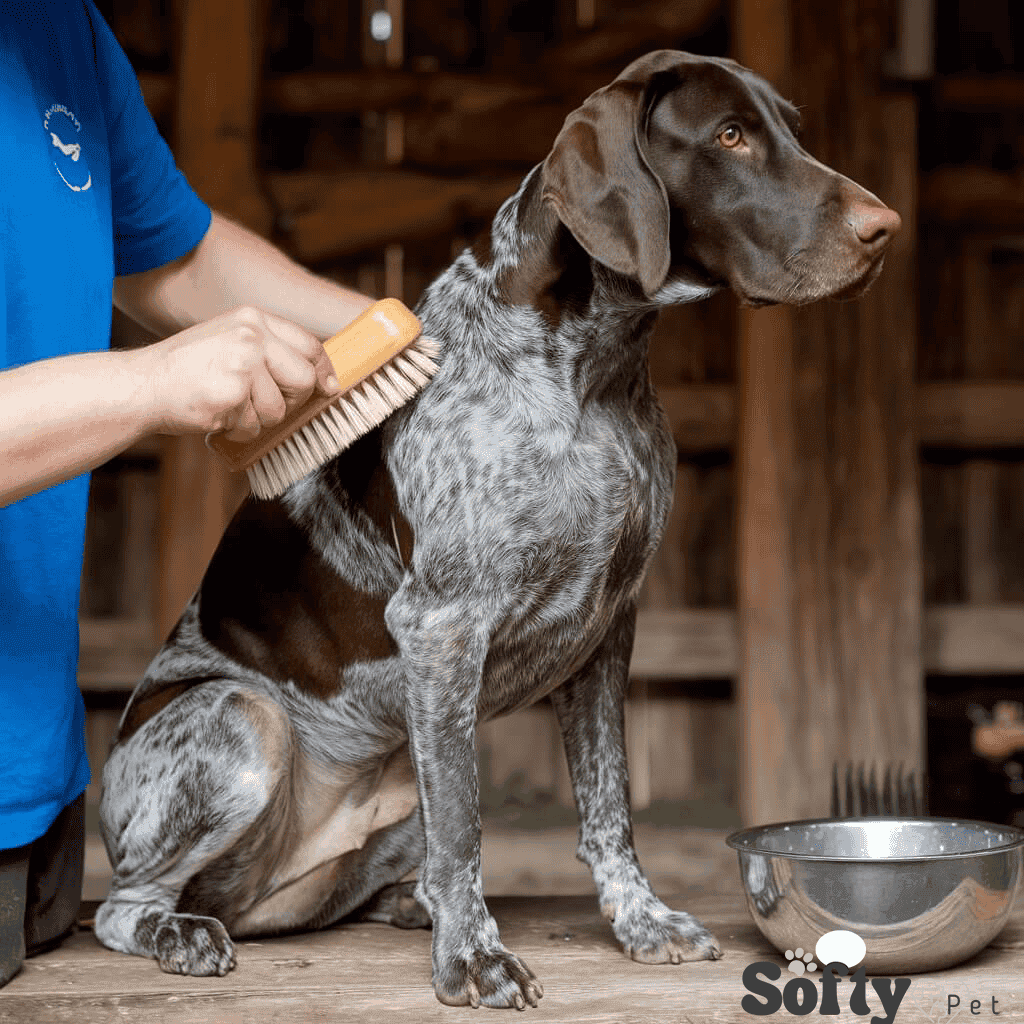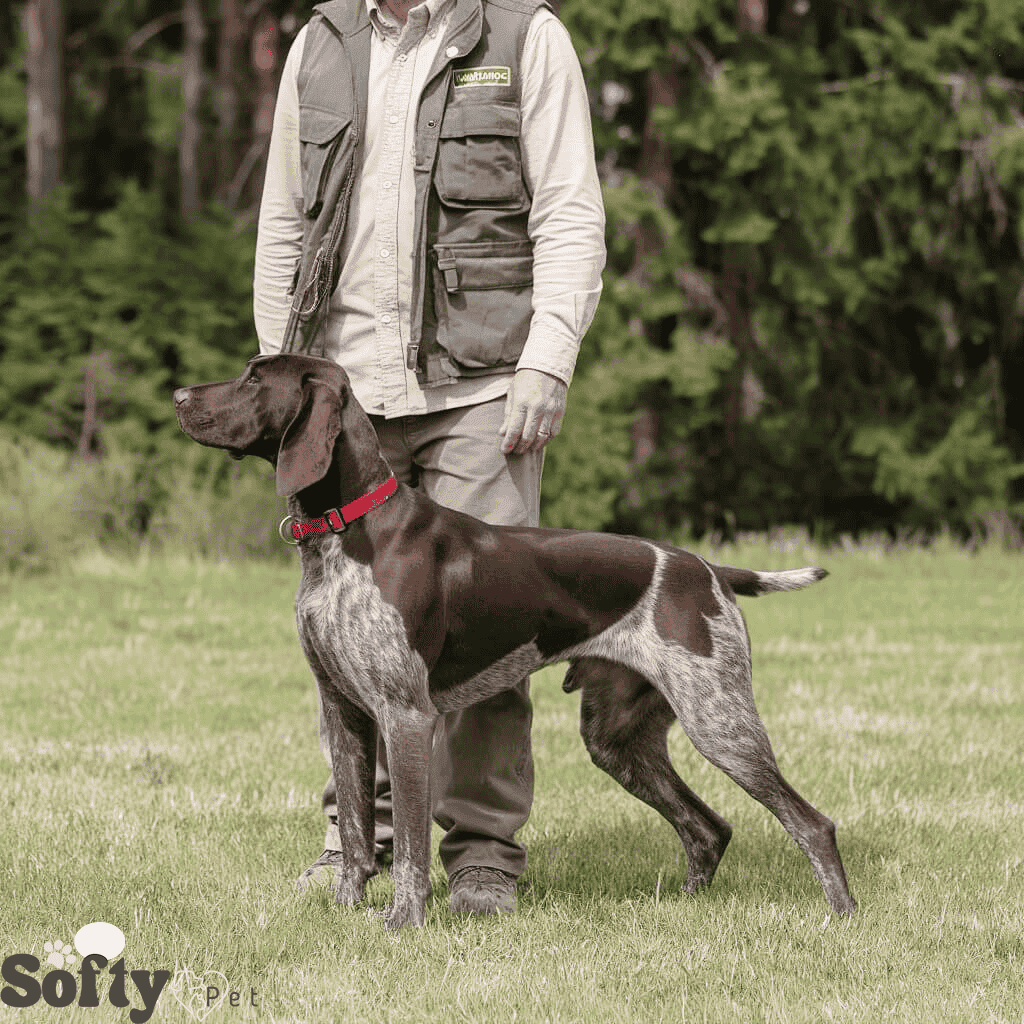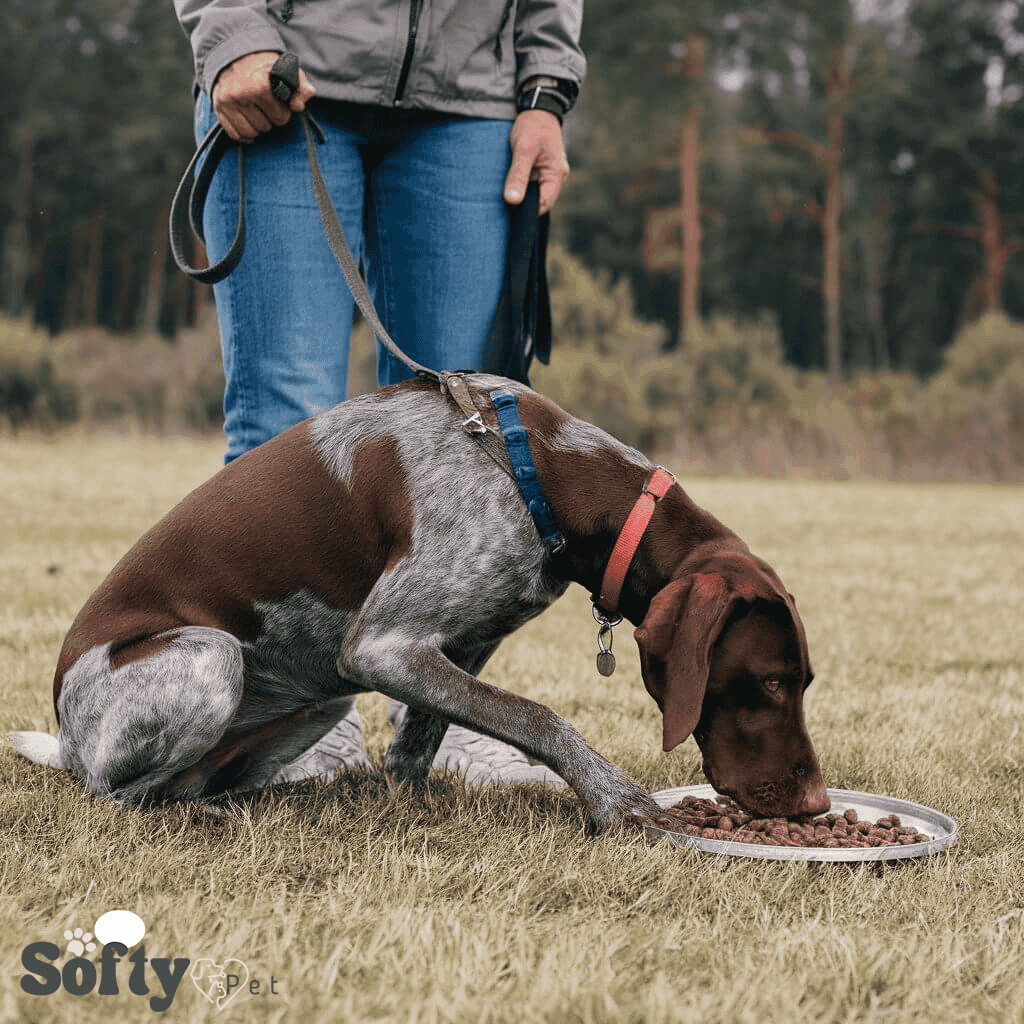The German Shorthaired Pointer. Or, you know, just “GSP” because honestly, who has time to say the full name every single time? These dogs are… well, they’re a lot. Fast as lightning, sharp as a tack, and kinda needy in that way that makes you laugh more than it annoys you. They’ve got these sleek coats and long, lean muscles that make them look like they belong in some doggy Olympics. And truthfully, if you’re more of a “stay on the couch” type, this probably isn’t the dog for you. But if you like to hike, run, or just be outside until the sun goes down? Yeah, a GSP will fit right in.

I’ll never forget the first time I actually saw one in action. Big open field, no leash, just pure focus. Head up, body locked in, tail sticking straight out. It didn’t just stand there; it was like it knew people were watching. I swear the dog was showing off. And that kind of presence? It stays with you.
But here’s the reality check: owning a GSP is not all sunsets and trail runs. It’s work. A lot of it. You can’t just fill the food bowl, throw the ball a couple times, and call it good. Doesn’t work like that. These dogs need proper, long exercise. Every. Single. Day. And I don’t mean a 20-minute walk around the block. We’re talking runs, hikes, games, training sessions. And if you don’t keep them busy? They’ll find their own “projects.” Chewed-up shoes, giant craters in your backyard, nonstop barking at nothing. Been there, seen it. Not fun.
But here’s the flip side—and it’s a big one. If you give them what they need? They’ll give you everything. GSPs are loyal in that full-body, eyes-locked-on-you way. They’ll follow you room to room, they’ll run until your legs give out, then curl up beside you like you’re the only thing that matters. And honestly, that feeling? It’s hard to describe.
That’s why I put this guide together. To break it down. What they eat (spoiler: diet really makes a difference), how to handle grooming (thankfully, not a huge headache), how much exercise to plan for (brace yourself—it’s a lot), and a few training tips I’ve picked up that can save you a ton of frustration.
By the end, you’ll have a much clearer picture of what life with a GSP really looks like. It’s not easy, and some days you’ll question what you got yourself into. But when they finally crash at night, lean their whole weight against you, and sigh that deep dog sigh like they’ve been waiting all day for that moment? You’ll know. You’ll know it’s worth it.
Understanding the German Shorthaired Pointer
What is a GSP Dog?
The German Shorthaired Pointer, or GSP, is one of those dogs that just does it all. They were bred for hunting in Germany, so pointing and retrieving is kind of second nature. In the field they’re sharp and focused, but at home they’re total cuddle bugs.
They’re medium to large, lean, and crazy athletic. You look at one and just know it could outrun you without even trying. Their coats are short, smooth, usually liver, white, or that speckled roan that always looks cool.
They’re smart—sometimes too smart. Training goes fast, but if you don’t keep them busy, they’ll invent their own “fun,” and yeah, it might be chewing up your stuff.
If you’re active, hiking, running, whatever… a GSP is perfect. They’re not sit-around dogs. They want to move and be part of everything you do.
Why GSPs Make Great Pets
GSPs are true family dogs. They don’t like being left out and usually stick to you like glue—whether that’s on the couch, at your feet, or shadowing you from room to room.
They’ve got endless energy. Running, hiking, swimming, chasing a ball—you name it, they’re always ready. And they’re smart, sometimes too smart for their own good. Training is usually quick, but you have to keep it interesting or they’ll find their own “fun.”
For all their hunting background, they’re gentle souls. With a little training and socializing, they’re great with kids and usually fine with other pets too. Loyal, playful, a bit goofy at times—life with a GSP is never boring, but it’s always full of love.
Common Characteristics of GSPs
Physical Features
It’s not hard to pick out a GSP in a crowd. They’ve got that lean, athletic body and a sleek coat that just screams “runner.” Most fall somewhere around two feet tall at the shoulder, and they’re sturdy without being bulky. The boys tend to be a little bigger, but both look ready to take off at a moment’s notice.
Their coats are short and super low-maintenance, which is a blessing, and the colors are gorgeous—liver, white, roan, or some mix in between. Honestly, every GSP I’ve seen looks a little different, and that makes them even more striking.
The eyes, though—that’s what gets you. Usually brown or amber, always expressive, like they’re reading you. With those floppy ears, and you’ve got a dog that looks both sporty and sweet at the same time. Most of them have docked tails too, which just adds to that neat, streamlined look they carry.

Lifespan and General Health
GSPs are usually pretty healthy dogs and most make it to 10, sometimes 14 years if you take good care of them. They’re tough, but like any breed, they’ve got a few weak spots. Hips can give them problems, bloat is one of those scary things you always have to watch for, and now and then eye issues show up.
The fact is, a lot of it comes down to the regular vet visits, decent food, and making sure they burn off all that energy they’re famous for. Do that, and chances are your GSP will stay strong and happy for a long time.
Temperament
GSPs are affectionate, full of energy, and smart as can be. They really want to please their people, and once they bond with you, that’s it—they’re loyal for life.
But all that energy and brainpower comes with a catch. They need something to do, every single day. Long runs, fetch, swimming, training games—anything that keeps their bodies and minds busy. You just skip that, and they’ll find their own way to stay entertained, and that usually means chewing, barking, or digging where you wish they wouldn’t.
GSPs are incredible companions. They fit right in with active families, and as long as they feel included and loved, they’ll obviously thrive.
Nutrition and Feeding Tips for GSP Dogs
Feeding a GSP isn’t too complicated, but it’s important. These dogs burn through energy all day long, so their food has to keep up. A good solid diet makes the difference between a dog that’s thriving and one that runs out of steam too fast.
Protein is the big one. Chicken, beef, turkey, fish, lamb—any good, clean source will do. That’s what builds muscle and fuels all the running and playing they love. Fats matter too. The healthy kind, like fish oil or flaxseed, keep their coats shiny and most importantly their brains sharp.
And yeah, carbs aren’t bad if you pick the right ones. Sweet potatoes, rice, oats—those give them steady energy that lasts instead of quick sugar crashes.
Most of the higher-end dog food brands already put this together for you. Purina Pro Plan, Orijen, Blue Buffalo—those are popular with GSP owners. If you ever think about cooking for your dog at home, just make sure to check in with your vet so it’s actually balanced.
How Much to Feed Your GSP
There’s no one general answer here. It depends on the dog—how old they are, how much they weigh, and honestly how much they run around. GSPs burn energy like crazy, so they need fuel, but you don’t want to overfeed them either.
Puppies:
They grow fast and play even faster. Instead of one big meal, split it into 3–4 smaller ones throughout the day. Puppy food with plenty of protein and calcium is your best bet while they’re building bones and muscle.
Adults:
Two meals a day is usually perfect. Most active GSPs eat somewhere between 2 and 3 cups of quality kibble daily. Split it into breakfast and dinner—it keeps them from getting too hungry and crashing halfway through the day.
Seniors:
Older GSPs don’t burn through calories like they used to. Cut portions down a little and look for foods with joint support. The main thing is keeping their weight in check so they stay comfortable as they slow down.
Activity Level Adjustments
Not every GSP eats the same. A Dog that’s hunting, running trails, or doing agility is going to need more fuel and energy than one that barely gets a couple of walks a day. The trick is to keep an eye on them, if they’re looking too lean or running out of steam, bump the food up a bit. If they’re starting to pack on weight, cut back. Simple as that.
Foods to Avoid
Not everything on your plate is safe for your GSP. Some foods are just dangerous for dogs, and others will just mess with their stomachs. It’s good to really know the difference.
Toxic foods
Chocolate is a big one—it contains the obromine, which dogs can’t handle. Grapes and raisins are bad news too.
they can damage the kidneys. Onions and garlic? Also a no-go since they can mess with red blood cells. And then there’s xylitol, that fake sugar you find in gum and “sugar-free” snacks—it can tank their blood sugar and hurt the liver.
Greasy or fatty stuff
Skip the fried foods, and fatty meats, or piles of cheese. GSPs don’t need it, and it can lead to weight issues or even pancreas trouble.
Bones and raw foods
Some folks swear by raw diets, but tossing your dog raw bones or unprocessed meat can be risky. Splintering, choking, bacteria—you name it. If you’re leaning that way, talk it over with your vet first.
Too many treats to consider
Its great for training, but it’s easy to overdo it as well. Too much sugar or fat means extra pounds and dental problems. Stick with healthier snacks like carrot sticks or natural, with low calorie treats.
At the end of the day, feeding smart makes a huge difference. Keep the toxic stuff out, don’t go overboard on extras, and your GSP will have the energy they need without the health headaches.
Exercise and Activity Needs
Daily Exercise Requirements
Fun Fact is that GSPs never really stop moving. They’re full of energy, and if you don’t give them enough outlets, then they’ll make their own fun by simply chewing, digging, or pacing around the house until you finally give in.
The question is, much is enough?
Most GSP dogs need about one to two hours of solid exercise every single day, and just a quick walk isn’t actually enough, they need real movement, running, playing, activities that actually wear them out. You can try and split it into morning and evening sessions to keep them balanced. Puppies and older dogs don’t need quite as much intensity, but still, they need daily activity to stay healthy and happy.
What kind of exercise works best?
Running or jogging is great since these dogs were built for stamina and speed. Hiking works too, especially if the terrain changes and keeps their minds engaged. Fetch and frisbee are simple but effective, they burn off energy and give you some bonding time. Swimming is another good option, many GSPs love water and it’s an easy way to work them out without stressing their joints.
The key thing to remember:
Consistency is actually more important than the occasional hard workout. A GSP who gets daily exercise will be calmer, happier, and a lot easier to live with.
Mental Stimulation for Intelligent Dogs
GSPs aren’t just runners, they’re thinkers too. And when a smart dog gets bored, you’ll know it. Chewed shoes, barking at shadows, holes in the yard—they’ll invent their own fun if you don’t give them something better.
Puzzle toys are an easy win. Hide a few treats in a Kong or grab one of those food-dispensing games, and they’ll stay busy for a while. But you don’t have to spend money—hide-and-seek with their favorite toy works just as well.
Training is another great way to wear out their brains. Teach them tricks, polish up commands, keep sessions short and fun. Change things up often, because GSPs get bored fast if it’s the same old routine.
And honestly, nothing beats adventures, like taking them hiking, let them splash in a lake, or just explore a new trail together. They actually thrive on variety, if you want to go further, agility courses, scent games, even dock diving are all right up their alley.
Don’t forget social time, something like dog parks, group runs, or even a play date with a neighbor’s pup give them both exercise and interaction. Like in the summer, let them swim, and in winter, let them tear around in the snow, just keep an eye on the weather so they stay comfortable.
Bottom line? A GSP dog with both physical and mental outlets is a happy dog, and honestly, a much easier one to live with. The Main thing is to keep their bodies moving and their minds working, and you’ll have a companion who’s always ready for the next adventure.
Grooming and Hygiene for Your GSP
Simple Grooming Routine

GSPs are honestly pretty easy to take care of. Their coats are short, smooth, nothing fancy. You don’t need to spend hours on them, just a little regular grooming and they’re good.
Brushing? Once, maybe twice a week is fine. Their hair doesn’t mat up but they do shed, and boy you’ll notice it in spring and fall. A soft brush or one of those grooming mitts works, whatever you’ve got. Sometimes I just wipe mine down with a damp rag when he’s dirty, does the trick.
Baths aren’t too often either. Every month or so, maybe sooner if they roll in something gross (and they will). Don’t overdo it though, too many baths dry out the skin. Use a dog shampoo, brush first, rinse really well. If there’s still suds you’ll know because they’ll start itching after.
Nails—don’t skip em. If you hear the click-clack on the floor, they’re too long. I try to do mine every few weeks but honestly sometimes I forget. Take a little off at a time so you don’t cut too deep, and yeah, if you’re nervous, just let the groomer do it.
Paws, teeth, ears—same deal. Check paws after long runs, sometimes pads crack or get stuff stuck. A little balm helps. Teeth, brush if you can (I know it’s a pain but it matters). Use dog toothpaste, never human, that stuff’s toxic. And ears… they get kinda gross if you ignore them. Peek once a week, wipe out gunk with cotton, not q-tips. If it smells bad or looks red, just go to the vet.
That’s really it. A little brushing, the odd bath, nails here and there, teeth and ears when you remember. Doesn’t take much, and honestly, it’s nice bonding time too.
Training and Socializing Your GSP
Basic Obedience Training
Training a GSP isn’t just about teaching tricks, it’s about keeping them safe and giving them structure. These dogs are smart, eager, and love making you happy, which means they pick things up quick… as long as you’re consistent.
The must know commands
Start with the basics, and “Sit” is usually the first, easy enough with a treat over the head and a little patience. Stay is tougher, they’ve got ants in their pants, but it’s worth the effort. Recall (come) is the big one, because a GSP with their nose on a scent won’t think twice before bolting. And “leave it” will save you from them snatching something dangerous off the ground (or just your dinner).

Tips that actually work
Keep things short, 10–15 minutes tops, use the same words every time, don’t switch it up, or you’ll confuse them, And praise matters treats, toys, silly voices, whatever makes them light up. Make sure its fun, because if they’re bored, training is over.
Behavior bumps along the way
GSP dogs are smart, but that brain plus energy can lead to trouble if you don’t get ahead of it. Bored dogs bark, chew, dig, you name it. Some even freak out when you leave (yep, separation anxiety is common). Signs are whining, barking, chewing, trying to bust out of the crate or house.
How to deal? First you have to start slow, and leave them alone for a few minutes, then stretch it out over time, be sure to give them a cozy spot with toys, maybe a blanket that smells like you. Try not to make a huge deal when you leave or come home, it just feeds the anxiety.
Puzzle toys or treat dispensers help too, it keeps their brain busy, and if it’s bad, don’t be afraid to ask a trainer for help.
Other problem stuff
Barking: Figure out why first, if it’s boredom, exercise fixes a lot, then teach a “quiet” or “enough” command and reward silence.
Digging: Totally normal for them, but not fun for your lawn. Burn off energy so they don’t dig from boredom. Or give them a “yes zone” in the yard where digging’s allowed.
Chewing: puppies chew when teething, adults chew when bored, try and give them plenty of toys, and if they grab something they shouldn’t, swap it calmly for a chew toy. Also, don’t leave shoes or remotes lying around, set them up for success.
At the end of the day, a trained GSP is a happy one. They thrive on guidance and challenges. Stay patient, and consistent, you’ll have a dog that listens, learns, and of course keeps that goofy, fun loving spark.
You can Discover more about Breeds on PawPits Official website
Conclusion
Caring for a German Shorthaired Pointer isn’t hard, but it does take time, patience, and yeah, a lot of love. These dogs are smart, full of energy, and super affectionate. If you give them the right mix of exercise, food, and attention, they’ll give it all back to you ten times over.
The basics? Know your dog, feed them good stuff, keep them moving, brush them now and then, and train with kindness. Do that and you’ll have a happy, healthy GSP who actually listens (most of the time anyway).
But honestly, it’s more than just “care tips.” GSPs don’t just live in your house, they wedge themselves right into your life. They’ll run trails with you, curl up at your feet, and stare at you like you hung the moon. The bond you get with them—it’s special. Not just a pet, but a real friend.
So yeah, if you’re bringing a GSP into your life, be ready to put in the effort. The routines, the training, the long walks, all of it. But also be ready for the goofy grins, the loyalty, and the kind of companionship you really can’t put a price on.
Read About The Black GSP Here.
To learn more about Dogs and breeds, you can check This!
Find Some Good Stuff For your Dog On Ped MD Official Website.

3 thoughts on “GSP Dog Care Made Easy: Love and Nurture Your German Pointer”
Comments are closed.